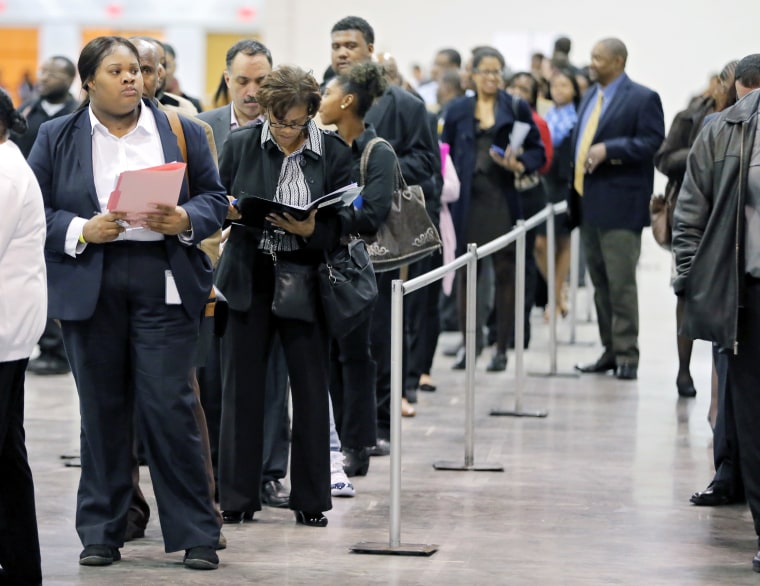Fewer jobs were created last month than economists anticipated, but the Bureau of Labor Statistics’ official unemployment rate fell to 3.9 percent, a level not seen since December 2000.
Despite worries of a trade war, the 164,000 jobs added in April included ones in manufacturing, construction and other goods-producing industries — a trend also reflected by the private-sector jobs report released on Wednesday by the payroll processing firm ADP and Moody’s Analytics.
ADP reported gains of 204,000 jobs in April, similar to economists’ consensus of 195,000 for the government’s figures. Despite falling short by 31,000 jobs, economists generally characterized the report as a good one, pointing to upwards revisions for February and March that, combined, totaled another 30,000 jobs.
The perennial sticking point remains wages. Average hourly earnings rose by four cents in April, and the annualized rate of growth is 2.6 percent, a level it has been at or near for months. Although this is below the 3.5 to 4 percent economists consider healthy, the silver lining is that it lowers fears of inflation or a shift to more aggressive Federal Reserve policy.
Harry J. Holzer, a professor of public policy at Georgetown University, characterized wage growth as “not great,” although he attributed some of this to demographics, as peak-earning baby boomers retire and are replaced by younger, cheaper workers.
Andrew Chamberlain, chief economist at Glassdoor, was optimistic that wage growth would soon follow. “What this means is labor shortages are starting to become more common in key fields like tech and health care and e-commerce,” he said. “Certainly, this is going to translate to better bargaining power for workers later in the year.”
At 2.9 percent, ADP’s wage growth figure suggested that this might be occurring already. “Wage growth is currently very close to 3 percent and accelerating. We’re going over 3 percent pretty soon,” Mark Zandi, chief economist at Moody’s Analytics, predicted.
ADP’s first-quarter Workforce Vitality Report found that pay growth is happening even faster for people entering the workforce, with a 5.2 percent year-over-year increase. “It’s highly suggestive of a very tight labor market,” Zandi said. “We’re also seeing a lot of wage growth, strong wage growth, for lower-skilled workers — that goes to how tight the labor market is for entry level.”
Even with unemployment below 4 percent, economists say there is little evidence that workers are benefiting from the Trump's corporate tax cuts.
Increasing job turnover is further evidence that demand for workers is picking up.
“Our data on hiring looks quite strong,” said Guy Berger, chief economist at LinkedIn. “Because the labor market has gotten better, more people feel confident quitting their jobs and starting new jobs… A lot of these new hires were people that were previously employed,” he said.
The next six months or so should be telling, Berger said. “I would expect the balance of indicators on wage growth we get between now and Thanksgiving are going to show a little bit of upward movement,” he said, predicting that today’s sporadic complaints among employers about their trouble finding workers would become a more common feature of the labor market. “You’re gong to hear more of these stories. ... Right now everyone is treating these as anecdotes, but that’s going to broaden.”
Yet even with the unemployment rate dipping below 4 percent, economists said there is little evidence that workers are benefiting from the big corporate tax cuts that took effect this year. Wage growth and productivity are still below where they should be, which suggests to some labor market experts that companies aren’t funneling that money into paying workers more, or investing in tools that could make them more productive.
“I’m very skeptical it will have a long-term effect on investment,” Holzer said, pointing out that companies were already enjoying record profits before the tax cuts. “You see a lot of stock buybacks rather than investment” in equipment or worker training, he said.
Although some companies announced that they would pass along some of the largesse to workers, much of that was in the form of bonuses, which don’t help elevate base pay, and many more companies are instead using that extra cash for share buybacks.
“Firms are getting more adept at figuring out ways — there are all kinds of creative ways where they can get around having to pay their workers more,” Holzer said.
